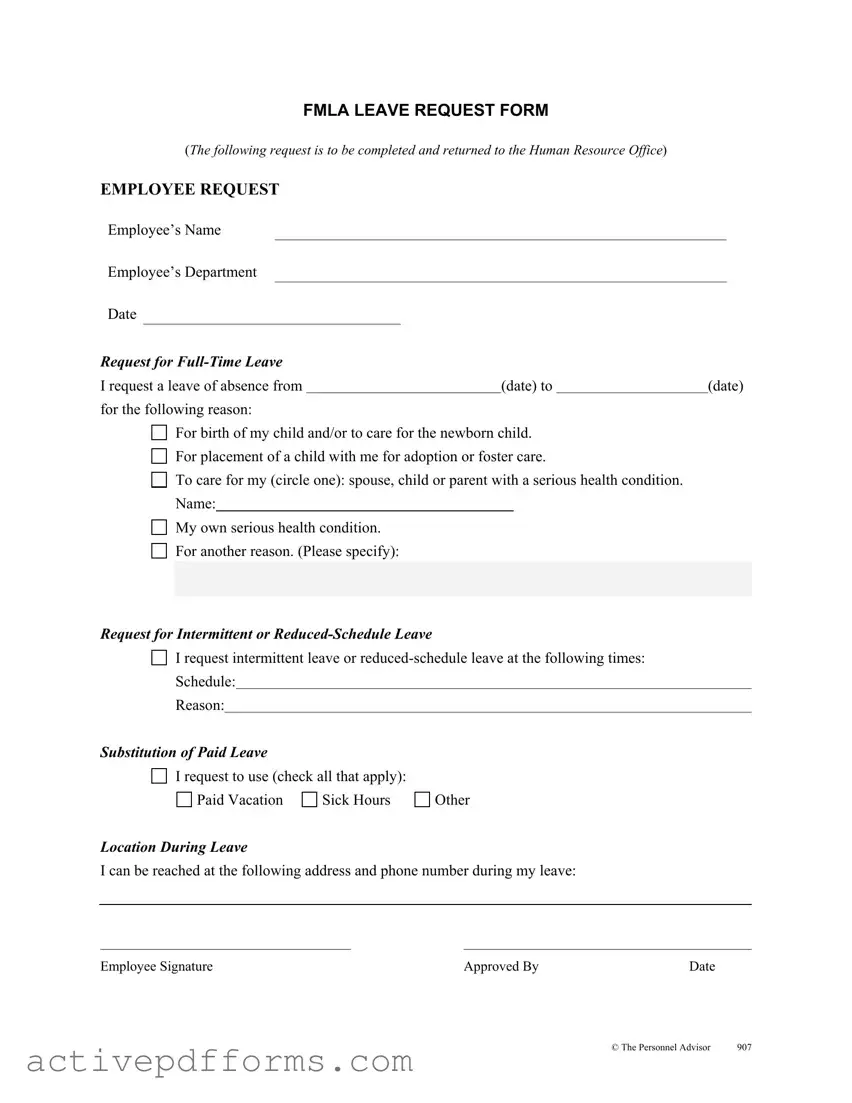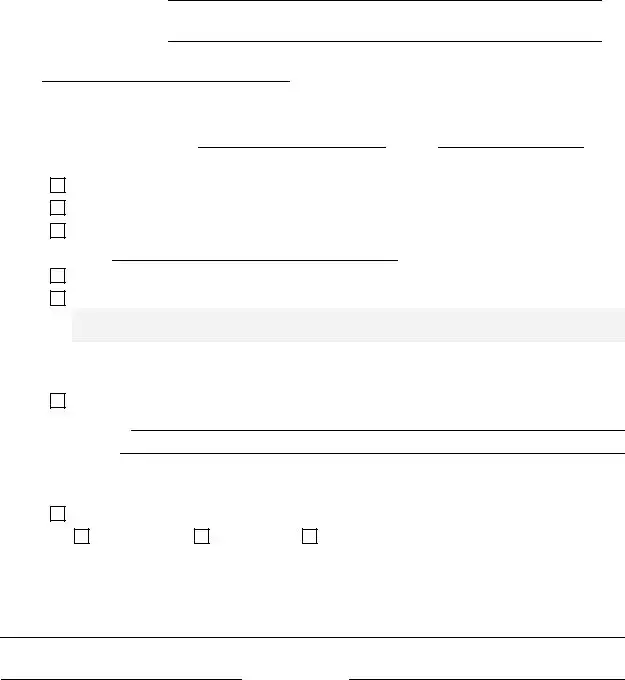What is the Family and Medical Leave Act (FMLA) Leave Request Form?
The Family and Medical Leave Act (FMLA) Leave Request Form is a document that employees must complete and return to their Human Resource Office when they seek to take leave under the FMLA. This form allows employees to request either full-time leave or intermittent/reduced-schedule leave for reasons such as the birth or adoption of a child, to care for a spouse, child, or parent with a serious health condition, for their own serious health condition, or for other specified reasons. Employees can also indicate if they wish to substitute their leave with paid vacation, sick hours, or other forms of paid leave.
Who is eligible to submit an FMLA Leave Request Form?
Eligibility to submit an FMLA Leave Request Form typically requires that the employee has worked for their employer for at least 12 months, has worked at least 1,250 hours over the 12 months prior to the start of leave, and works at a location where the company employs 50 or more employees within 75 miles. These criteria must be met for an employee to be eligible for FMLA leave.
For what reasons can an employee take FMLA leave?
- For the birth and care of the employee's newborn child.
- For the placement of a child with the employee for adoption or foster care.
- To care for an immediate family member (spouse, child, or parent) with a serious health condition.
- To take medical leave when the employee is unable to work due to their own serious health condition.
- For any qualifying exigency arising out of the fact that an employee’s spouse, son, daughter, or parent is a military member on covered active duty or call to covered active duty status.
Can FMLA leave be taken intermittently or on a reduced schedule?
Yes, employees are allowed to take FMLA leave intermittently or on a reduced schedule if such leave is medically necessary due to their own serious health condition, to care for an immediate family member with a serious health condition, or to care for a covered servicemember with a serious injury or illness. Eligibility for intermittent leave or reduced scheduling depends on the specific circumstances and requires approval from the employer.
How does an employee request the substitution of paid leave?
In the FMLA Leave Request Form, employees have the option to request the substitution of paid leave by checking the appropriate box(es) for paid vacation, sick hours, or other. This means the employee wishes to use their accrued paid leave concurrently with their FMLA leave, essentially receiving pay during what would otherwise be unpaid leave. It is important to note that the policies regarding the substitution of paid leave may vary by employer.
What is required for the FMLA Leave Request Form to be approved?
For an FMLA Leave Request Form to be approved, it must be filled out completely and accurately, then submitted to the Human Resource Office for review. In some cases, certification from a health care provider to support the need for leave due to a serious health condition (for the employee or the family member being cared for) may be required. The employer may also have additional requirements or documentation that needs to be completed as part of the approval process.
How quickly must an employer respond to an FMLA leave request?
Once a completed FMLA Leave Request Form and any required certification are submitted, the employer must provide a response within five business days, advising the employee of their eligibility and whether the FMLA leave has been approved. If additional information is needed before the request can be approved, the employer must specify what is required from the employee.
What if an employee needs to extend their FMLA leave?
If an employee needs to extend their FMLA leave, they should notify their employer as soon as possible. The employer may require an updated FMLA Leave Request Form and/or additional medical certification to approve the extension. The total amount of FMLA leave an employee can take in a 12-month period is limited, so it's essential to communicate with the employer about any changes to the leave period.

